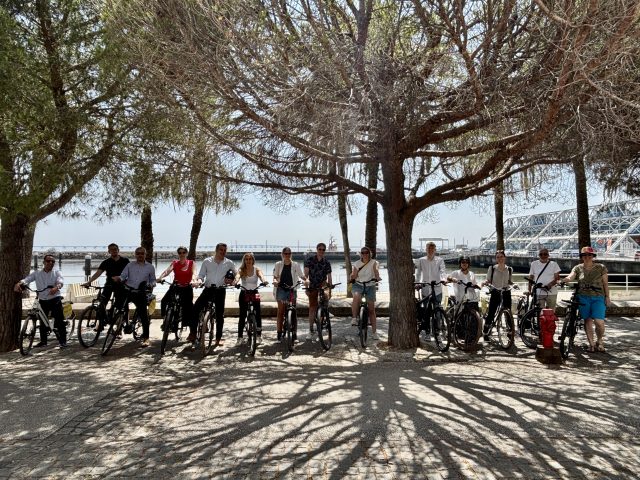Portugal workshop – 16-17 June 2025

The seventh EU Road Safety Exchange (EURSE) workshop took place on 16 and 17 June in Lisbon and Cascais, Portugal, and focused on urban road safety, particularly on re-designing spaces to protect pedestrians and cyclists.
The event was hosted by the Portuguese National Road Safety Authority (ANSR). Participants included representatives from the Portuguese municipalities of Cascais and Mirandela, as well as peers from Brussels Region in Belgium and Pontevedra in Spain.
The workshop kicked off with a presentation of Portugal’s national Vision Zero strategy, pending formal adoption. Ana Tomaz, Vice-President of ANSR, outlined planned measures to address road safety at the local level – particularly relevant given that a significant number of road deaths occur in urban areas.
ANSR has planned programmes that seek to provide financial support to up to 30 municipalities per year following the Vision Zero approach, for implementing road safety measures. Another programme focuses on the development of safe school zones across the country, including curriculum updates to strengthen road safety education, awareness campaigns, and infrastructure improvements around schools.
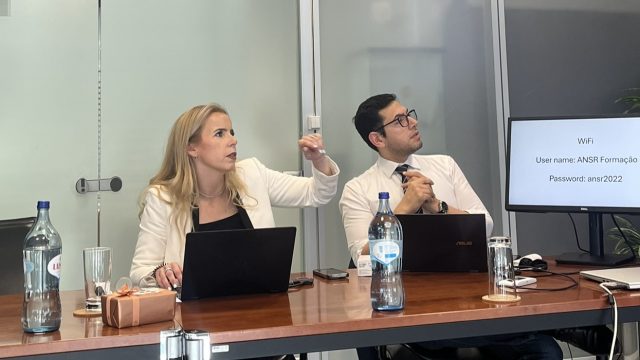
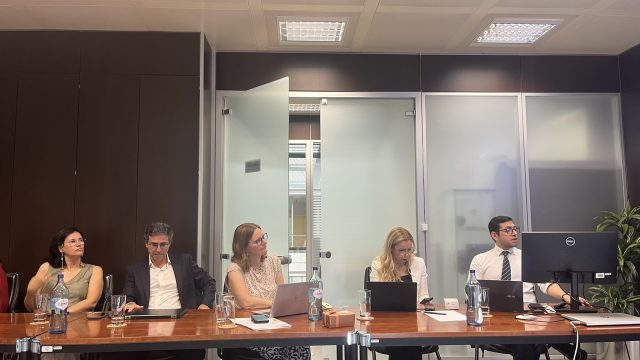
Participants learned about the work carried out by the Road Safety Observatory. Augusto Torbay, Head of Division, highlighted several new initiatives to improve quality and accessibility of data, including an interactive dashboard to share road crash data with other stakeholders and the public, for better informed decisions.
He also presented ongoing efforts to digitise crash data collection and promote the use of artificial intelligence to identify high-risk sections and ensure timely and effective data collection, emphasising the importance of a data-driven approach and innovations to reduce the number of crashes.
The focus then shifted to the practices of participating municipalities, with Paulo Marques, Director of the Cascais mobility company, outlining the city’s recent developments to improve mobility. He expanded on key measures included in Cascais’ 2024–2025 mobility plan, such as the pedestrianisation of the city centre, reallocation of street space, reduced speed limits, and improved public transport with expanded routes and better service.
The plan also involves reducing parking spaces in the city centre to discourage car use. Awareness activities with schools are also part of the strategy to promote safer and more sustainable mobility habits.


Orlando Pires, Vice-President of the Mirandela municipality, shared how the city’s involvement in the EURSE project, particularly the study visit to Pontevedra, had been a valuable opportunity to exchange experiences with a city that has already implemented many urban mobility measures. With support from EU funding, the municipality is modernising its mobility system, focusing on residential and school areas.
Efforts include better traffic and parking management, infrastructure upgrades, and promoting walking, cycling, and public transport, alongside improvements to public spaces. Several safe road infrastructure solutions recently adopted were showcased.
Gregory Claessens from Brussels Mobility presented the region’s “City 30” strategy, introduced in 2021, which set a default speed limit of 30 km/h on nearly all city streets. He explained how the measure fits into a broader road safety and mobility framework, supported by communication campaigns, infrastructure adaptations, and increased enforcement through automatic speed cameras.
The presentation included early results showing reductions in average speeds, improved road user behaviour, and fewer collisions – even on streets where speed limits remained unchanged. The presentation also included examples of measures to improve safety in high-risk areas such as school zones, as well as ongoing support to local municipalities working to upgrade their road networks.
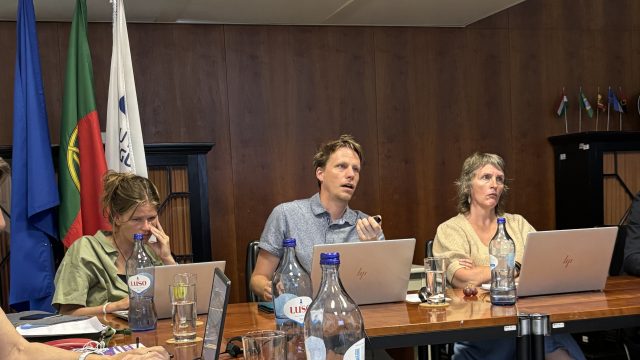
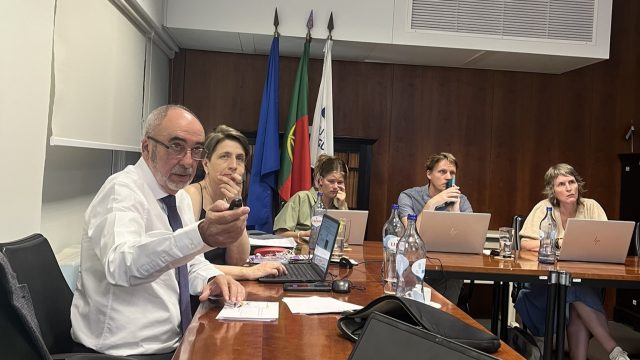
Daniel Macenlle Díaz, Director General for Citizen Protection at Pontevedra City Council, outlined the city’s long-term transformation, which began in the late 1990s, aimed at reducing car dependency and improving liveability for the people. Pontevedra has limited through-traffic and removed unnecessary car use in the city centre by relocating parking to the outskirts. Street space has been reallocated to prioritise pedestrians and cyclists, with wide sidewalks and narrow traffic lanes.
The city follows the “8/80” principle, aiming to create streets that are safe and welcoming for both the youngest and the oldest road users, and to ensure that public space is accessible to all. The city has received awards for its urban transformation and has also achieved a notable reduction in road crashes and injuries.
João Cardoso from LNEC focused on the safety beyond urban roads to secondary roads, highlighting the complexity of managing them due to fragmented responsibilities across different levels of administration. He presented a pilot project involving Portugal, the Czech Republic, and the Netherlands, which aims to identify risks and apply adapted safe system interventions, while considering the specific needs of different road user groups, with particular attention to motorcyclists.
Alan Areal from PRP presented an initiative focused on improving road safety education by developing teaching materials that are modern, inclusive, and adapted to current educational needs. The approach aims to involve the wider community and promote safe behaviours without overwhelming teachers, while ensuring road safety topics are well integrated across different subjects in the school curriculum.


After the presentations, participants travelled to Cascais for a site visit, which began with a ride through the city on a hydrogen-powered bus – demonstrating the municipality’s ambition for sustainability. The visit showcased a range of urban road safety measures, including expanded pedestrian zones, redesigned streets, and speed reduction initiatives.
Cascais has also introduced policies to reduce parking in the city centre while promoting public transport, supported by extended routes and improved service. Public transport is free for all residents of Cascais.


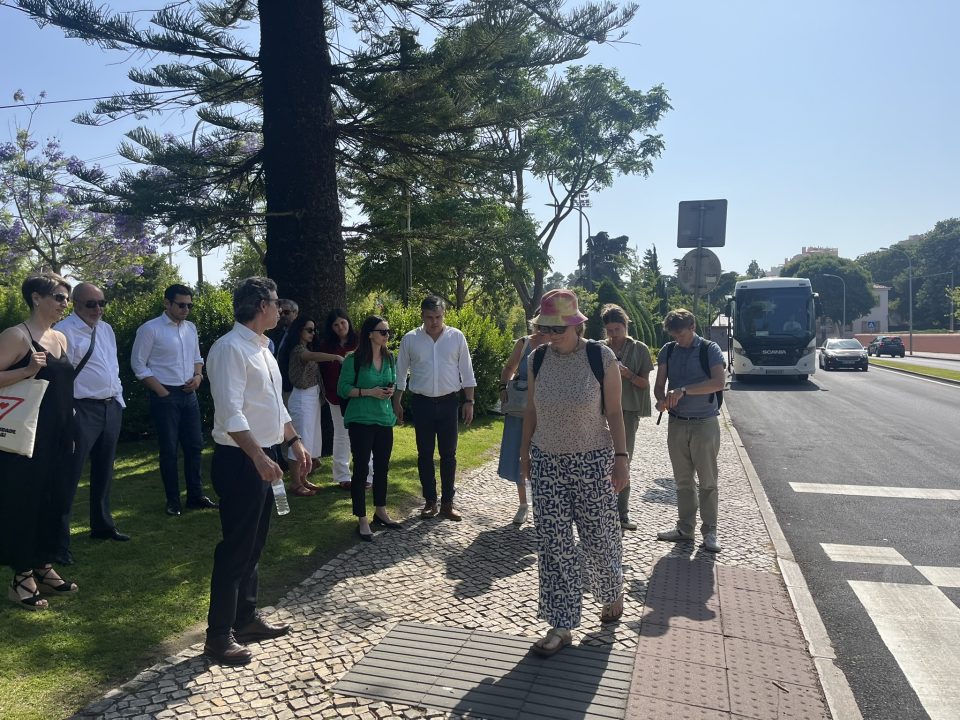
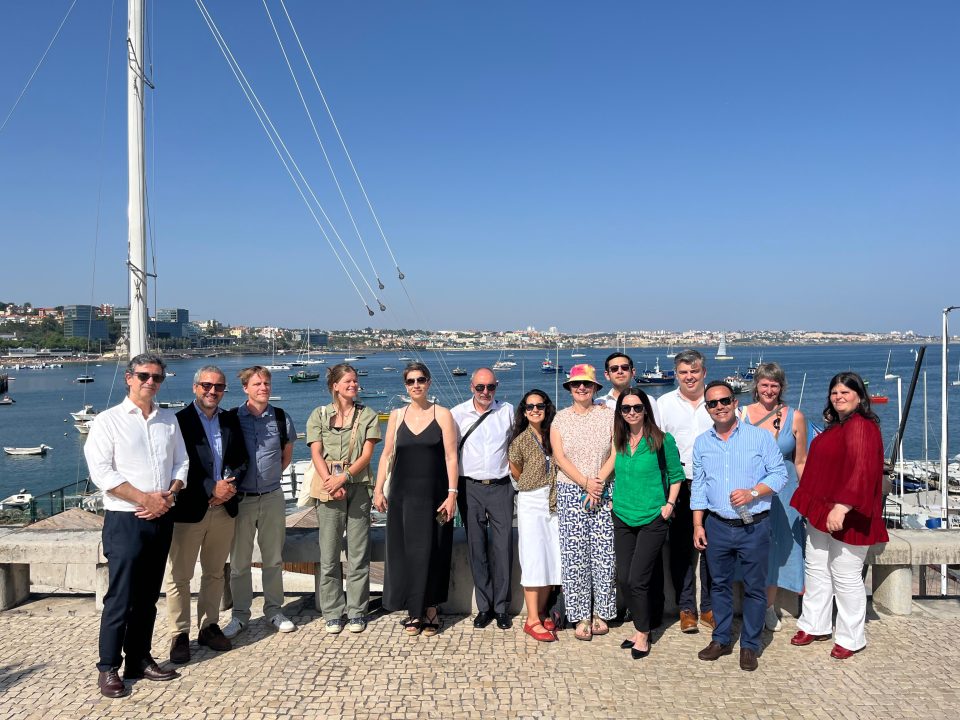
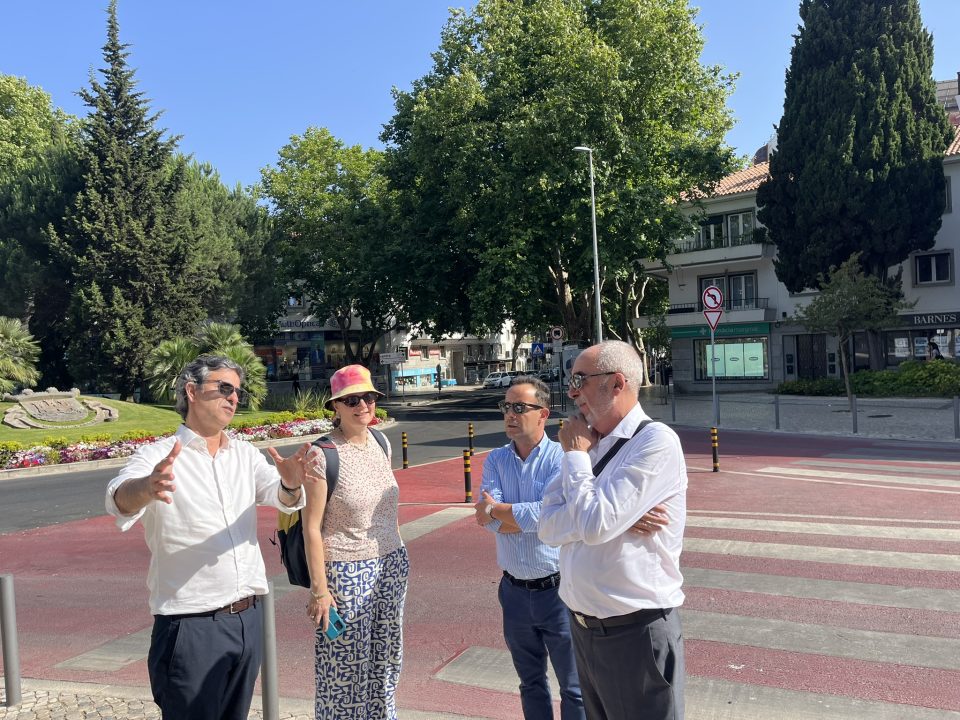
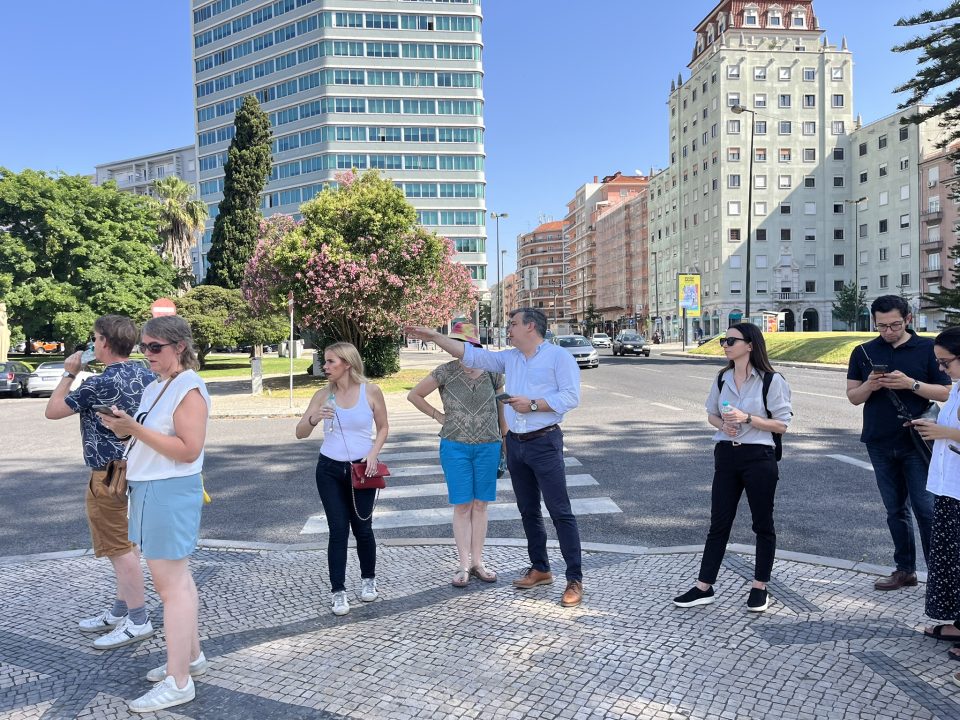
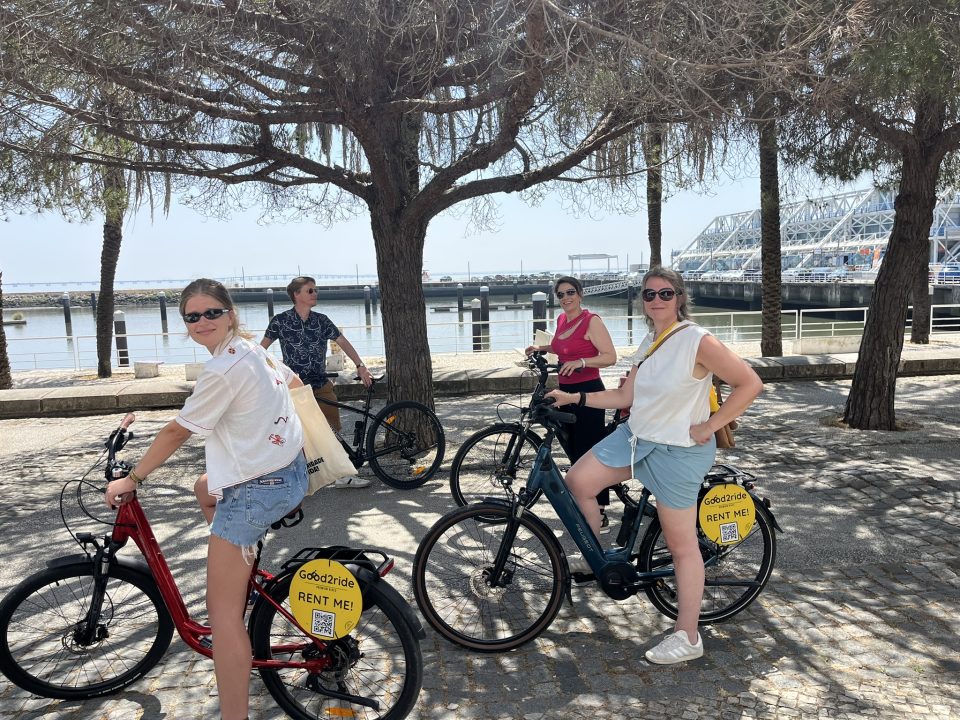

The second day began with a visit to a local school in Lisbon to observe a “bike train” in action – a city initiative encouraging children to cycle to school safely. Once per week, for each school part of the programme, the bike train supported by trained adults goes around the predefined route and gathers children to bring them to school encouraging healthy habits from an early age.
This was followed by a study visit to several locations in the city, where participants observed recent infrastructure changes aimed at protecting vulnerable road users, including wider pavements, cycling paths, traffic-calming features and safer crossings.
Participants had the chance to ride a bike themselves to see recent developments first-hand and get a feel for how the city’s infrastructure supports the uptake of cycling.
The workshop showed the value of seeing how other cities are tackling similar challenges and the benefit of direct exchanges between local and national actors. Two more workshops are planned for 2025, with project countries continuing to work together on shared road safety priorities.
